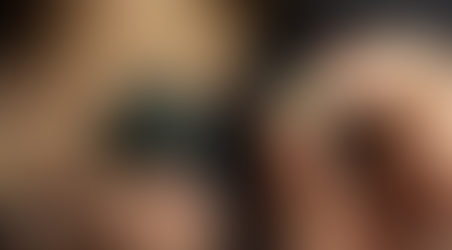WHY DOING YOUR FACE PULLS IS SO IMPORTANT!
- Vincent A. Demonbreun
- Jul 27, 2020
- 5 min read

Face pulls help strengthen the chronically weak muscles in our upper body that get stretched out all day as we sit in a slumped position at the computer or driving our cars.
The face pull is a simple exercise to perform, but the problem is that most people do it (and even teach it) completely wrong!
Stop Doing Face Pulls Like This!
(AVOID THESE MISTAKES)





PLEASE… DON’T MAKE THESE FACE PULL MISTAKES!
There are lots of WRONG ways to do a face pull, and plenty of YouTube videos out there showing you incorrect technique.
EQUIPMENT: CABLES VS. BANDS
Whether you’re training at the gym with cables or training at home with bands, there are some important differences between the two and considerations for both.
First and foremost, if you have access to a cable machine at the gym, that’s the preferred option.
If you’re at home, it doesn’t mean you can’t do the face pull. It just means that there is something you need to be aware of when it comes to doing it with the band.
When you do a face pull with the band, the strength curve is different than what you’re going to encounter on a cable. As you stretch the band further and further out it gets more and more difficult.

If you’ve got access to a cable machine, it’s a better option. But what kind of attachment would you use?
You wouldn’t want to attach a bar to this because you’re going to limit the amount of rotation you can get through your shoulders, which is an all-important component of this exercise.
You’d want to use a rope, but the problem with one rope is that it’s usually not long enough to get our arms out as wide as we want to. We need it to be wide enough so we can get into external rotation, and a single rope doesn’t allow us to get there.
The best option is to use a sled rope if you’ve got one, or simply take a second rope at the gym and attach them in this way.
HEIGHT ADJUSTMENT FOR EQUIPMENT
One of the most common errors when performing the face pull is the incorrect placement of the anchor point of the band or the cable.
You see some people taking a lower anchor point with the face pull, but that sets up the wrong mechanics for this exercise. You saw Jesse doing the ‘upright pull’. That’s horrible for your shoulders.
You’re basically performing an upright row instead of a face pull.
Do not set a low anchor point for the face pull because it’s not safe for the shoulders.
When you resist from low to high, you’re asking for an eccentric contraction of the external rotators of the shoulder to counteract that because you’re being pulled down and forward. If your arm is getting pulled forward, your back is getting rounded too. You lose your thoracic extension and if you try to externally rotate the shoulders you can only do so up to a certain point.
Sometimes people will pull from chin level or even worse, chest height. This positioning puts too much emphasis on the muscles of the upper back, and almost completely removes the rotator cuff from the movement.
To properly target your rotator cuff and not turn the movement into a bastardized row or shrug you need to ensure that the anchor point for the face pull is positioned above your head.
In order to properly target your rotator cuff and not turn the movement into a bastardized row or shrug you need to ensure that the anchor point is positioned above your head. You can see that when I stand up into full extension, now I get an extra 20 degrees of external rotation.
When we get in the correct position of external rotation pulling from high to low, we strengthen the muscles we’re looking to work in this exercise: rear delts, mid scapula, rhomboids and traps.
BEST STANCE FOR THE FACE PULL
The best stance for the face pull is the one that’s most athletic, but which is that?
Often people tell me “I’m never sure if I’m supposed to stand square, or if I’m supposed to stand staggered, or if I’m supposed to put my leg up on something.”
The best, most athletic stance for the face pull is a square stance.

The square stance regulates the amount of weight you can use and makes it tough to overload it to the point where it degrades your form on that exercise. If you try to go so heavy that you’re getting pulled forward, you know you’re going too heavy.
If you have bad balance, it’s ok to get into a staggered position as long as you square up your hips and shoulders and pull that way throughout the exercise.
CORRECT GRIP FOR THE FACE PULL
Grip is one of the most important factors when it comes to the face pull.
Lots of people who do get the high to low anchoring correct, go wrong when they take an overhand grip. Again, this promotes internal rotation of the shoulder with elevation of your arms overhead.

TRAVEL: REMEMBER, IT’S A FACE PULL!
Travel is the track your hands and elbows take the rope or cable as you pull. There are two things you want to pay attention to here.
The first thing is: where are you pulling to? What’s the destination?
This should be easy, but it gets screwed up a whole hell of a lot!
This is a FACE pull.
True to its name, the face pull’s destination is your face. Not your clavicle, your chest or over your head.
The other important thing to pay attention to is the position of your hands and elbows at the end point of the movement.
What wins the race to the end point… your elbows or your hands?
The answer is: your hands.
People get this wrong all the time. They let their elbows win like this.
You do not want your elbow beating your hand because it creates internal rotation with elevation of the shoulders yet again.
Instead the hands should be beating the elbows in a race to the back.

WEIGHT SELECTION AND PROGRAMMING
A lot of people ask me how heavy they should load their face pulls and how often they should perform them.
Let’s talk about weight selection first. The right weight is not so heavy that it’s pulling you forward, but not so light that the exercise becomes ridiculous.
This isn’t a corrective exercise so you don’t want to be limp with the cable.
However, you also don’t want to load it so much that you need extra momentum or a backward lean in order to move the weight. This is NOT a power move or an opportunity to demonstrate your strength.
You just want to load it enough to get a meaningful contraction in the muscles we’re trying to target. You’re trying to strengthen weak muscles that are being compromised by over-dominant anterior chain muscles.
What about sets and reps? Let’s put it this way. If you’re going to do 12 reps of these, make sure it’s 12 sets of 1.
That’s the mentality.
Every single one of them has to be a good, solid contraction.
Squeeze, hold, raise up if you’re going to, come down, and rest. Reset and begin your next rep.
The face pull is so important and gives attention to so many important but underused muscles that you can perform it every single day.
You’re not going to overtrain with these. You’re addressing a weakness, and counteracting the postural effects that this weakness has on you by doing the face pulls more frequently.
While there are no magic bullets in the pursuit of fitness and athleticism, the face pull is as close to one as we’re going to get! People who properly perform the movement have reported improved posture, elimination of neck, back and shoulder pain as well as a reduction in chronic headaches. Regardless of your training goals, you want to keep your postural muscles healthy, so throw in some face pulls at the end of every workout.




















Comments